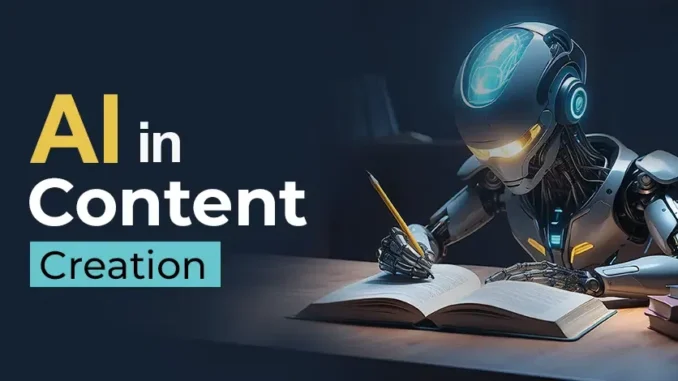
Artificial intelligence is rapidly transforming the landscape of content creation, offering tools and capabilities that were unimaginable just a few years ago. For businesses, this shift presents both an opportunity and a challenge. On one hand, AI can dramatically increase the speed and scale at which content is produced. On the other, it requires a thoughtful approach to ensure that the output remains authentic, relevant, and aligned with brand values. Understanding how to use AI effectively for content creation means recognizing its strengths, knowing its limitations, and integrating it into workflows in a way that enhances rather than replaces human creativity.
At its most basic level, AI can assist with generating written content, from blog posts and product descriptions to email campaigns and social media updates. These systems are trained on vast datasets and can mimic human language with impressive fluency. For example, a marketing team might use AI to draft initial versions of promotional copy, saving time and allowing writers to focus on refining tone and messaging. This kind of augmentation is particularly useful when dealing with repetitive or formulaic content, where the value lies more in consistency and volume than in originality. By automating these tasks, businesses can free up creative resources for more strategic work.
Beyond text generation, AI also supports content ideation. Tools powered by machine learning can analyze trends, audience behavior, and competitive landscapes to suggest topics that are likely to resonate. This is especially valuable in fast-moving industries where relevance is key. A content strategist might use AI to identify emerging themes in customer conversations or pinpoint gaps in existing coverage. These insights help teams stay ahead of the curve and produce content that speaks directly to audience interests. Rather than replacing human intuition, AI enhances it by providing data-driven context that informs creative decisions.
AI’s role in personalization is another game-changer. Modern consumers expect content that reflects their preferences, behaviors, and needs. AI enables this by segmenting audiences and tailoring messages accordingly. For instance, an e-commerce platform might use AI to generate product recommendations and accompanying descriptions based on a user’s browsing history. Similarly, a newsletter can be dynamically composed to highlight articles most relevant to each subscriber. This level of customization not only improves engagement but also builds trust, as users feel seen and understood. The key is to balance automation with transparency, ensuring that personalization doesn’t come across as intrusive or manipulative.
Visual content is also benefiting from AI advancements. Image and video generation tools can create assets from scratch or enhance existing ones, streamlining production for design teams. AI can suggest layouts, adjust colors, and even generate illustrations based on textual input. For example, a startup launching a new app might use AI to produce promotional graphics that align with its brand identity, without needing a full-time designer. While these tools are not yet a substitute for high-end creative work, they offer a practical solution for businesses with limited resources or tight timelines. As the technology matures, its ability to support visual storytelling will only grow.
One of the more nuanced applications of AI in content creation is in editing and optimization. AI tools can analyze readability, tone, grammar, and SEO performance, offering suggestions that improve clarity and discoverability. A content manager reviewing a blog post might use AI to identify passive voice, flag jargon, or recommend keywords that boost search rankings. These enhancements help ensure that content not only reads well but also performs effectively in digital environments. Importantly, the final judgment still rests with the human editor, who brings context and nuance that AI cannot replicate.
Despite its capabilities, AI is not a magic bullet. It lacks the lived experience, emotional depth, and cultural sensitivity that human creators bring to the table. Businesses must be cautious not to over-rely on AI, especially when crafting content that requires empathy, humor, or ethical nuance. For example, a crisis communication statement or a brand manifesto should be written by people who understand the audience and the stakes involved. AI can assist with structure and language, but the voice and values must come from within the organization. This distinction is critical to maintaining authenticity and credibility.
Integrating AI into content workflows also requires a shift in mindset. Teams need to view AI not as a threat but as a collaborator—one that can handle the heavy lifting while they focus on strategy and storytelling. This means investing in training, experimenting with different tools, and establishing clear guidelines for usage. It also involves setting expectations around quality, originality, and ethics. For instance, businesses should disclose when content is AI-generated, especially in contexts where transparency matters. They should also ensure that AI tools are used responsibly, avoiding plagiarism, bias, or misinformation.
Ultimately, using AI for content creation is about enhancing human potential. It’s about leveraging technology to work smarter, not just faster. When used thoughtfully, AI can help businesses produce more content, reach more people, and tell better stories. It can surface insights, streamline processes, and support personalization at scale. But it cannot replace the human touch—the creativity, empathy, and judgment that define great content. The future of content creation lies in collaboration, where AI and humans work together to craft messages that are not only efficient but also meaningful. For businesses willing to embrace this partnership, the possibilities are vast and exciting.